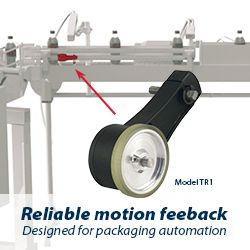How Hybrid Manufacturing (3D Printing + CNC Machining) is Revolutionizing Rapid Prototyping
Struggling with the rapid prototyping dilemma? This article explores how hybrid manufacturing integrates 3D printing for design freedom and CNC machining for precision, offering a viable path to complex, functional prototypes faster than ever before.
For engineers and product developers, the rapid prototyping phase often presents a difficult choice. Opt for 3D printing to achieve unparalleled design complexity quickly, but compromise on material properties and surface finish. Choose CNC machining for its strength, precision, and excellent finish, but face longer lead times and higher costs for complex geometries.
This trade-off between freedom and function is a classic bottleneck in product development. However, a strategic approach that combines these technologies is changing the game: Hybrid Manufacturing.
What is Hybrid Manufacturing?
Hybrid manufacturing is not necessarily about a single, all-in-one machine. In practice, it is an intelligent workflow strategy that leverages the strengths of both additive and subtractive processes.
The process typically unfolds in two critical stages:
1、3D Printing (Additive Manufacturing): An initial near-net-shape part is created using 3D printing. This step excels at producing complex internal features, lightweight lattice structures, and integrated components that would be prohibitively expensive or impossible to create from a solid block of material.
2、CNC Machining (Subtractive Manufacturing): This printed part then undergoes precision CNC machining. This stage is where critical tolerances, threads, sealing surfaces, and fine details are finished to meet exacting specifications. The result is a part that boasts the geometric freedom of additive manufacturing with the mechanical integrity and precision of a CNC-machined component.
The Tangible Benefits of a Hybrid Approach
The synergy between these processes offers compelling advantages for functional prototyping and low-volume production.
From Prototype to Part: The most significant advantage is the delivery of truly functional prototypes. A part can be designed with optimal performance in mind, manufactured with complex internal features via 3D printing, and then finished with CNC machining on all critical interfaces. This creates a prototype that is not just a visual model but a part ready for functional testing and validation.
Reduced Time to Market: While machining a complex part from solid material can be time-consuming, using 3D printing to create the base form dramatically reduces raw material and initial machining time. The CNC work is then focused solely on achieving critical tolerances and finishes, streamlining the overall production timeline.
Unlocked Design Innovation: Engineers are freed from many traditional design-for-manufacturability (DFM) constraints. This allows for the creation of parts with organic shapes, consolidated assemblies, and internal channels that lead to lighter, stronger, and more efficient final products.
Implementing a Hybrid Strategy
The question for many teams is how to access this capability without investing in entirely new equipment and expertise.
The answer lies in partnership. Look for a manufacturing partner who can act as a single point of contact and manage the entire process seamlessly. The ideal workflow is simple from the client's perspective: provide a CAD model, and receive a high-quality, finished part.
The manufacturing provider handles the intricacies: advising on design feasibility, selecting the appropriate 3D printing technology and material, designing fixtures for the printed parts, performing precision CNC operations, and conducting final quality assurance. This integrated approach ensures accountability and delivers a part that meets precise specifications without the client managing multiple vendors.
Conclusion
Hybrid manufacturing represents a significant evolution in prototyping and manufacturing. By moving beyond the forced choice between 3D printing and CNC machining, it offers a third path that is greater than the sum of its parts. It empowers innovators to create without compromise, accelerating the journey from concept to reality.
For engineering teams looking to push the boundaries of what's possible, exploring a hybrid manufacturing strategy is a logical and powerful next step.
Featured Product

